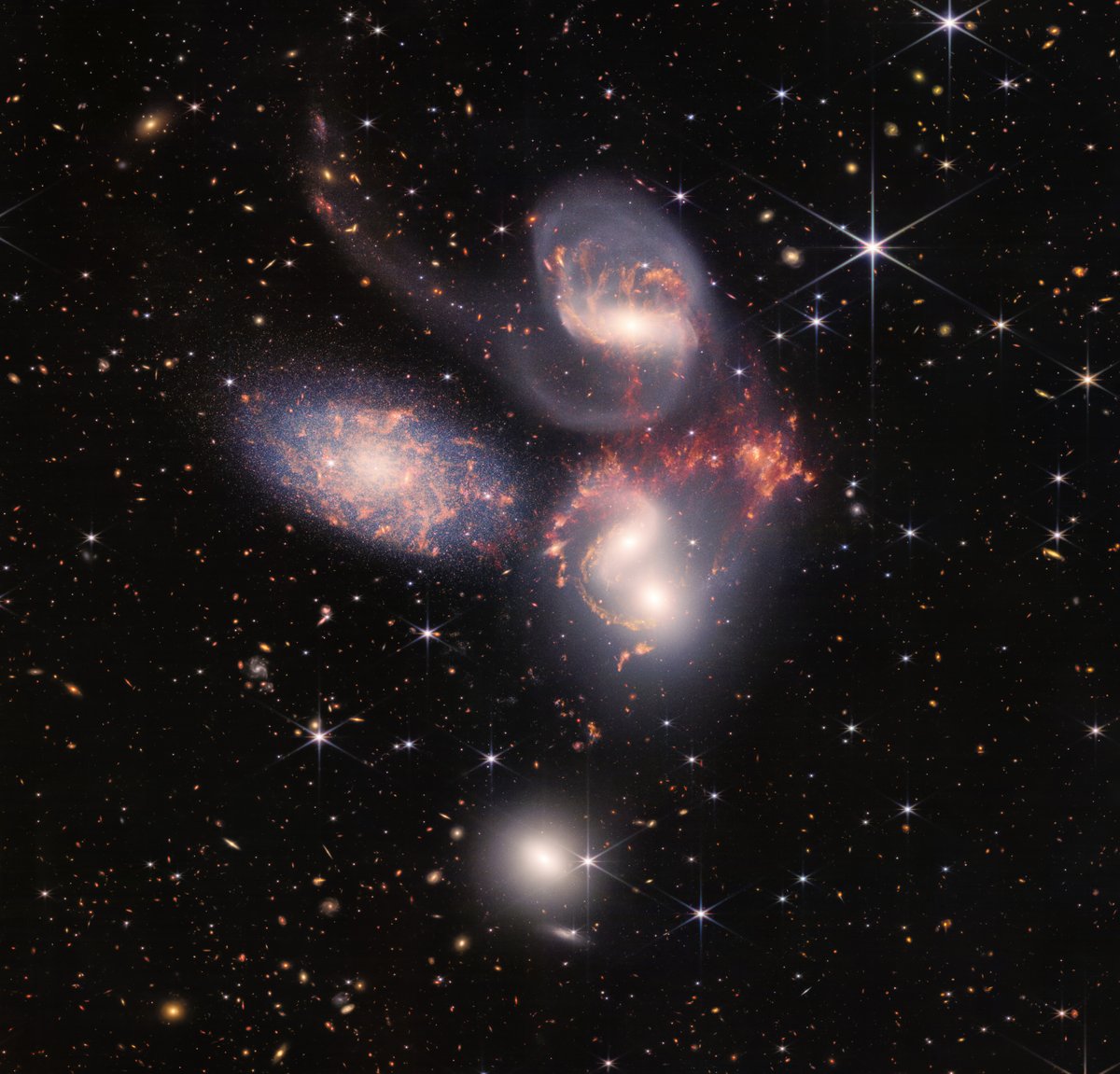
📢 #Webb delivers deepest image of the Universe yet, looking far back in time when the Universe was less than a billion years old. The image is about the size of a grain of sand held at arm’s length, yet it reveals thousands of galaxies. Read more esawebb.org/news/weic2209/ or 👇 

This is Webb’s First Deep Field, the deepest, sharpest infrared image of the distant Universe so far. It shows galaxy cluster SMACS 0723 as it appeared 4.6 billion years ago, with many more galaxies in front of and behind the cluster 👇
The combined mass of this galaxy cluster acts as a gravitational lens 🔎 magnifying more distant galaxies, including some seen when the Universe was less than a billion years old 👇
In this deep field, Webb’s #NIRCam has brought distant galaxies 🌀 into sharp focus – they have tiny, faint structures that have never been seen before, including star clusters and diffuse features 👇
The field was also imaged by Webb’s #MIRI instrument as well, which offers a kaleidoscope of colours 🔵🔴🟢and highlights where the dust is – a major ingredient for star formation & ultimately life itself 👇 

Two #Webb instruments also obtained spectra – data that reveal objects’ physical and chemical properties that will help researchers identify many more details about distant galaxies in this field 👇 

Webb’s #NIRSpec microshutter array observed 48 individual galaxies at the same time – a new technology used for the first time in space. Data revealed light from one galaxy travelled for 13.1 billion years before Webb’s mirrors captured it 👇 

Finally, Webb’s #NIRISS used Wide-Field Slitless Spectroscopy to capture spectra of all the objects in the entire field of view at once. Among the results, it proves that one of the galaxies has a mirror image. See the full resolution images here 👉 esawebb.org/news/weic2209/ 

• • •
Missing some Tweet in this thread? You can try to
force a refresh











